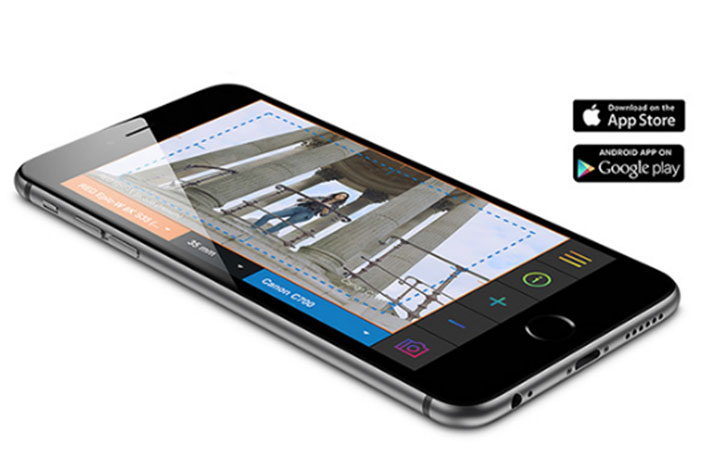
PhotoCineView allows DPs to carry a Director’s Viewfinder in their pocket, to frame the set as classic DVs do, but does more, like allowing to visually compare the results from two sensors, and even more…
A Director’s Viewfinder is essentially a framing tool, enabling users to quickly… frame the scene and define the best focal length to use. The traditional Director’s Viewfinders, which sometimes do not cover the odd sizes of some modern day digital sensors, have shared space with simpler models, sometimes also called lens finders. A third type of Director’s Viewfinder is available since smartphones became widely used: it’s an application that not only does offer the same options as the classic models, but complements that with other features, like taking photos or registering GPS data, that make these modern apps an essential tool, not only for videographers, but also for photographers.
A classic Director’s Viewfinder will cost you from as little as $150 up to more than $6000 for a Denz Director’s Viewfinder kit. A Director’s Viewfinder application for a smartphone will cost you a few dollars, or be completely free, as is the case with PhotoCineView, available for Android and iOS. PhotoCineView simulates the field of view of today´s most commonly used digital cinema cameras, including models from ARRI, Blackmagic Design, Canon, Panasonic, Phantom, RED, or Sony.
There are many apps available to choose from, and you’ll probably have heard of Artemis Director’s Viewfinder, a paid app – costs $29.99 – available for iOS and Android. There are also apps that are specific to some camera models. Sometimes, it is difficult to choose which app to use, also because the reviews for one platform, like iOS, might not represent how the app behaves in another OS. For example, some users suggest that Artemis Director’s Viewfinder works better on Apple’s smartphones than Android. My recent review of the LightMeter app for android also pointed to differences between the Android and iOS versions. There is also another aspect to consider, related to Android: due to the differences between brands, some apps run better on some Android phones than others.
PhotoCineView is a free mobile application developed by PhotoCineRent for audiovisual professionals. PhotoCineRent is a French company that rents and sells professional equipment, so the app shows links that allow professionals to either rent or buy the lenses/cameras present on the application. Even if you do not intend to use PhotoCineRent services, the app is a good free tool to install if you regularly scout locations and want to know the best lenses to use. This is true for both photographers and videographers.
With the arrival of new cameras and a variety of sensor sizes it becomes more difficult to make an optimal combination choice for a shoot. In tracking for a shoot, PhotoCineView allows you to select and compare optical and camera combinations. Ideal for location scouting, it allows users to go back home with photographs – saved in the smartphone’s photo library – that allow for easier creation of storyboards and share/discuss ideas with the crew, to prepare a shoot. By allowing you to select the best optics and cameras to get the desired result, and simulate what it will look like, the app saves valuable time.
The fact that PhotoCineView allows users to compare the coverage and aspect ratio of two digital sensors simultaneously, makes it easy to anticipate lens and camera choices. With the new generation of cameras and the number of existing sensor variations multiplied, the application quickly solves the mysteries of FOV and crop factors, an important aspect when the range of sensors goes from the RED or ARRI to the Panasonic GH5.
The tool is simple and quick to use, and the interface is user-friendly. The coloured rectangles make it possible to visually compare the various sensors, but the information available extends to a number of technical specifications of each camera – there are close to 50 available, at the moment – such as resolution, mount, framerates, base ISO, internal ND filters, latitude, video outputs, recording formats, and more, which can also be easily compared to one another.
Focal length coverage goes from 8 to 200mm, and for the moment the application only simulates spherical lenses, with 2X and 1.3x anamorphic support promised for an update. The app uses both English and French languages, selectable by the user, and is a 32MB download, from either the App Store or Google Play.
